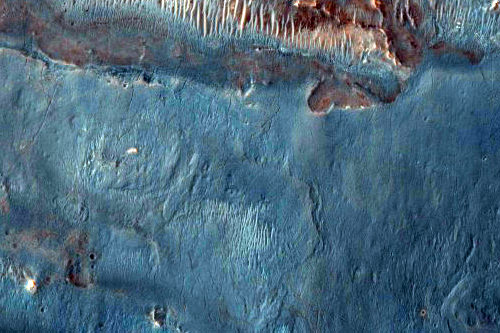Universe Today | Mars | 11 Oct 2010
Deep crustal carbonate rocks exposed by meteor impact on Mars - JR Michalski, PB NilesData from the Mars Reconnaissance Orbiter suggests that there could be habitable environments underground on Mars – in the past, and perhaps even today. Scientists discovered evidence of long-sought-after hydrothermally altered carbonate-bearing rocks which were once deep within the Red Planet, exposed within an impact crater. “Carbonate rocks have long been a Holy Grail of Mars exploration for several reasons,” said Joseph Michalski from the Planetary Science Institute. He explained that on Earth, carbonates form with the ocean and within lakes, so the same could be true for ancient Mars. “Such deposits could indicate past seas that were once present on Mars. Another reason is because we suspect that the ancient Martian atmosphere was probably denser and CO2-rich, but today the atmosphere is quite thin so we infer that the CO2 must have gone into carbonate rocks somewhere on Mars.”
This unique mineralogy was spotted within the central peak of a crater to the southwest of a giant Martian volcanic province named Syrtis Major. With infrared spectra from the Compact Reconnaissance Imaging Spectrometer for Mars (CRISM), planetary geologists detected the hydrothermal minerals from their spectroscopic fingerprints. Visible images from the HiRISE camera (High Resolution Imaging Science Experiment) on board MRO show that the carbonates and hydrated silicate minerals occur within deformed bedrock that was exhumed by an ancient meteor impact that poked through the volcanic upper crust of Mars.
The carbonate-bearing rocks were once likely about about 6 km (about 4 miles) underground. The carbonate minerals exist along with hydrated silicate minerals of a likely hydrothermal origin.
- Nature Geoscience (online: 10 Oct 2010) DOI: 10.1038/ngeo971
